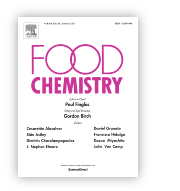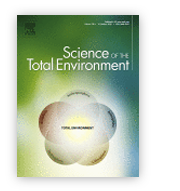Research papers of the month – September
We present the highest-score research papers of September 2021. These papers were published in journals with the highest Impact Factor − Q1, according to Scimago Journal Rank and Journal Citation Reports by Clarivate.
Alan Gasiński, Joanna Kawa-Rygielska, Dawid Mikulski, Grzegorz Kłosowski, Adam Głowacki
Raquel Espinosa, José Palma, Fernando Jimenez, Joanna Kamińska, Guido Sciavicco, Estrella Lucena-Sánchez
Salimi Shokoufeh, Martin Berggren, Miklas Scholz
Marta Kolanowska, Ewa Michalska, Kamil Konowalik
Application of white grape pomace in the brewing technology and its impact on the concentration of esters and alcohols, physicochemical parameteres and antioxidative properties of the beer
Alan Gasiński, Joanna Kawa-Rygielska, Dawid Mikulski, Grzegorz Kłosowski, Adam Głowacki
Food Chemistry
 Main by-product of white wine production is white grape pomace (WGP). It has attracted attention of food scientists, because it possesses high concentration of nutrients and bioactive substances. In this study, WGP was added to the beer after primary fermentation in two different concentrations (10% w/w and 20% w/w) and two different pretreatments (pasteurised and unpasteurised) to determine, whether the most abundant waste from white wine industry could be used to modify the volatilome and phenolic content of the beer. The addition of white grape pomace increased the concentration of phenolic compounds in all of the tested beers (from 321.584 mg gallic acid equivalent (GAE)/dm3 to 501.459 mg GAE/dm3). Antioxidant activity of the beers with addition of WGP (tested with the ABTS+•, DPPH• and FRAP assays) also increased. The composition of volatiles in beers changed as WGP was added. The most significant difference was in the concentration of acetaldehyde - beers with WGP added had 4–7 times lower acetaldehyde content (17.425–31.425 mg/dm3) than the control sample (134.050 mg/dm3).
Main by-product of white wine production is white grape pomace (WGP). It has attracted attention of food scientists, because it possesses high concentration of nutrients and bioactive substances. In this study, WGP was added to the beer after primary fermentation in two different concentrations (10% w/w and 20% w/w) and two different pretreatments (pasteurised and unpasteurised) to determine, whether the most abundant waste from white wine industry could be used to modify the volatilome and phenolic content of the beer. The addition of white grape pomace increased the concentration of phenolic compounds in all of the tested beers (from 321.584 mg gallic acid equivalent (GAE)/dm3 to 501.459 mg GAE/dm3). Antioxidant activity of the beers with addition of WGP (tested with the ABTS+•, DPPH• and FRAP assays) also increased. The composition of volatiles in beers changed as WGP was added. The most significant difference was in the concentration of acetaldehyde - beers with WGP added had 4–7 times lower acetaldehyde content (17.425–31.425 mg/dm3) than the control sample (134.050 mg/dm3).
DOI:10.1016/j.foodchem.2021.130646
A time series forecasting based multi-criteria methodology for air quality prediction
Raquel Espinosa, José Palma, Fernando Jimenez, Joanna Kamińska, Guido Sciavicco, Estrella Lucena-Sánchez
Applied Soft Computing
 There is a very extensive literature on the design and test of models of environmental pollution, especially in the atmosphere. Current and recent models, however, are focused on explaining the causes and their temporal relationships, but do not explore, in full detail, the performances of pure forecasting models. We consider here three years of data that contain hourly nitrogen oxides concentrations in the air; exposure to high concentrations of these pollutants has been indicated as potential cause of numerous respiratory, circulatory, and even nervous diseases. Nitrogen oxides concentrations are paired with meteorological and vehicle traffic data for each measure. We propose a methodology based on exactness and robustness criteria to compare different pollutant forecasting models and their characteristics. 1DCNN, GRU and LSTM deep learning models, along with Random Forest, Lasso Regression and Support Vector Machines regression models, are analysed with different window sizes. As a result, our best models offer a 24-hours ahead, very reliable prediction of the concentration of pollutants in the air in the considered area, which can be used to plan, and implement, different kinds of interventions and measures to mitigate the effects on the population.
There is a very extensive literature on the design and test of models of environmental pollution, especially in the atmosphere. Current and recent models, however, are focused on explaining the causes and their temporal relationships, but do not explore, in full detail, the performances of pure forecasting models. We consider here three years of data that contain hourly nitrogen oxides concentrations in the air; exposure to high concentrations of these pollutants has been indicated as potential cause of numerous respiratory, circulatory, and even nervous diseases. Nitrogen oxides concentrations are paired with meteorological and vehicle traffic data for each measure. We propose a methodology based on exactness and robustness criteria to compare different pollutant forecasting models and their characteristics. 1DCNN, GRU and LSTM deep learning models, along with Random Forest, Lasso Regression and Support Vector Machines regression models, are analysed with different window sizes. As a result, our best models offer a 24-hours ahead, very reliable prediction of the concentration of pollutants in the air in the considered area, which can be used to plan, and implement, different kinds of interventions and measures to mitigate the effects on the population.
DOI:10.1016/j.asoc.2021.107850
Response of the peatland carbon dioxide sink function to future climate change scenarios and water level management
Salimi Shokoufeh, Martin Berggren, Miklas Scholz
Global Change Biology
 Stress factors such as climate change and drought may switch the role of temperate peatlands from carbon dioxide (CO2) sinks to sources, leading to positive feedback to global climate change. Water level management has been regarded as an important climate change mitigation strategy as it can sustain the natural net CO2 sink function of a peatland. Little is known about how resilient peatlands are in the face of future climate change scenarios, as well as how effectively water level management can sustain the CO2 sink function to mitigate global warming. The authors assess the effect of climate change on CO2 exchange of south Swedish temperate peatlands, which were either unmanaged or subject to water level regulation. Climate chamber simulations were conducted using experimental peatland mesocosms exposed to current and future representative concentration pathway (RCP) climate scenarios (RCP 2.6, 4.5 and 8.5). The results showed that all managed and unmanaged systems under future climate scenarios could serve as CO2 sinks throughout the experimental period. However, the 2018 extreme drought caused the unmanaged mesocosms under the RCP 4.5 and RCP 8.5 switch from a net CO2 sink to a source during summer. Surprisingly, the unmanaged mesocosms under RCP 2.6 benefited from the warmer climate, and served as the best sink among the other unmanaged systems. Water level management had the greatest effect on the CO2 sink function under RCP 8.5 and RCP 4.5, which improved their CO2 sink capability up to six and two times, respectively. Under the current climate scenario, water level management had a negative effect on the CO2 sink function, and it had almost no effect under RCP 2.6. Therefore, the researchers conclude that water level management is necessary for RCP 8.5, beneficial for RCP 4.5 and unimportant for RCP 2.6 and the current climate.
Stress factors such as climate change and drought may switch the role of temperate peatlands from carbon dioxide (CO2) sinks to sources, leading to positive feedback to global climate change. Water level management has been regarded as an important climate change mitigation strategy as it can sustain the natural net CO2 sink function of a peatland. Little is known about how resilient peatlands are in the face of future climate change scenarios, as well as how effectively water level management can sustain the CO2 sink function to mitigate global warming. The authors assess the effect of climate change on CO2 exchange of south Swedish temperate peatlands, which were either unmanaged or subject to water level regulation. Climate chamber simulations were conducted using experimental peatland mesocosms exposed to current and future representative concentration pathway (RCP) climate scenarios (RCP 2.6, 4.5 and 8.5). The results showed that all managed and unmanaged systems under future climate scenarios could serve as CO2 sinks throughout the experimental period. However, the 2018 extreme drought caused the unmanaged mesocosms under the RCP 4.5 and RCP 8.5 switch from a net CO2 sink to a source during summer. Surprisingly, the unmanaged mesocosms under RCP 2.6 benefited from the warmer climate, and served as the best sink among the other unmanaged systems. Water level management had the greatest effect on the CO2 sink function under RCP 8.5 and RCP 4.5, which improved their CO2 sink capability up to six and two times, respectively. Under the current climate scenario, water level management had a negative effect on the CO2 sink function, and it had almost no effect under RCP 2.6. Therefore, the researchers conclude that water level management is necessary for RCP 8.5, beneficial for RCP 4.5 and unimportant for RCP 2.6 and the current climate.
DOI:10.1111/gcb.15753
The impact of global warming on the niches and pollinator availability of sexually deceptive orchid with a single pollen vector
Marta Kolanowska, Ewa Michalska, Kamil Konowalik
Science of the Total Environment
 Orchidaceae are among the most endangered plants in the world. Considering the sensitive nature of pollinator-plant relationship the most vulnerable are species which are dependent on a single pollen vector. In this paper the future distribution of suitable niches of Australian sexually deceptive orchid Leporella fimbriata and its pollinator (Myrmecia urens) was estimated using three machine learning algorithms. While the potential range of fringed hare orchid depending on modelling method will be larger or slightly reduced than currently observed, the ant will face significant loss of suitable niches. As a result of global warming the overlap of orchid and its only pollen vector will most probably decrease. The unavailability of pollen vector will lead to decreased reproductive success and as a result it will be a great threat for L. fimbriata existence.
Orchidaceae are among the most endangered plants in the world. Considering the sensitive nature of pollinator-plant relationship the most vulnerable are species which are dependent on a single pollen vector. In this paper the future distribution of suitable niches of Australian sexually deceptive orchid Leporella fimbriata and its pollinator (Myrmecia urens) was estimated using three machine learning algorithms. While the potential range of fringed hare orchid depending on modelling method will be larger or slightly reduced than currently observed, the ant will face significant loss of suitable niches. As a result of global warming the overlap of orchid and its only pollen vector will most probably decrease. The unavailability of pollen vector will lead to decreased reproductive success and as a result it will be a great threat for L. fimbriata existence.
DOI:10.1016/j.scitotenv.2021.148850










